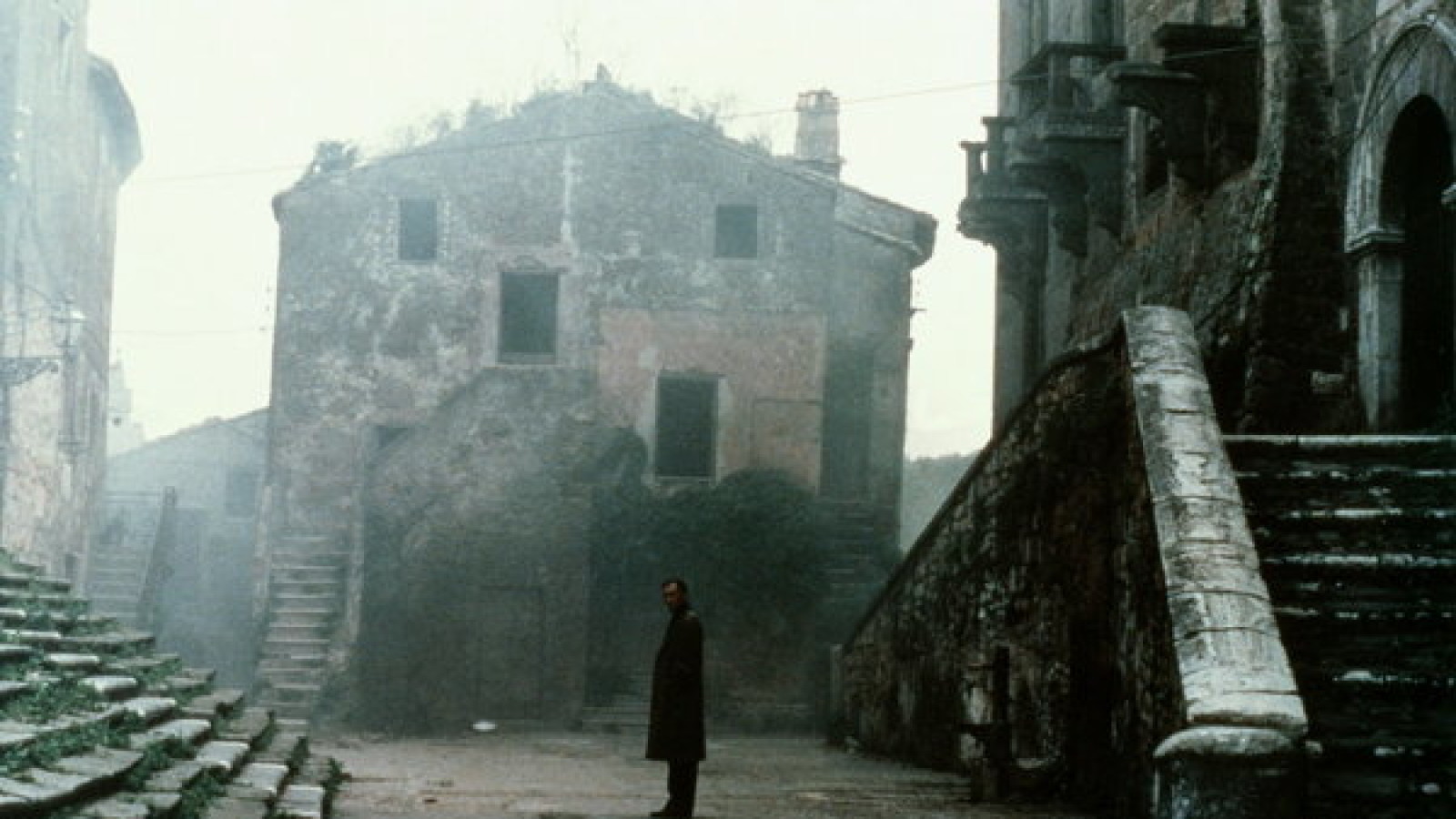
In cinema, we often speak of what makes a good film. But just as often we discuss the scenes in a film which burn themselves into our minds. Action movies prove to be among the most memorable. The car chase in The French Connection is hard to forget, just as the jungle escape sequence from Raiders of the Lost Ark easily embeds itself into the collective consciousness.
Then of course, there are the classic lines such as Clark Gable’s closer “I don’t give a damn” moment in Gone with the Wind. Such examples stand out in part due to their novelty, and sometimes because an easily accessible editing scheme sends just the right stimuli to our reactive brain centers.
Less often discussed are the quieter moments, the not-so-spectacular scenes, the visions which rather than blast into your brain by brute force, bubble up slowly, seeping into your synapses over time. It’s those sequences you recall in the shower, walking to work or during a sudden epiphany at a party. What did that scene mean? What was it really about? Why do I keep thinking about it? It’s the difference between a fun carnival ride and a line from a poem that you carry like a seed within you.
In classic European cinema, we are treated to a great many such scenes by various masters of the form. It was a different market in the past, where experimentation had more value and directors were freer to follow their instincts. Even when needing to compromise, great things percolated from these great minds.
These are moments which the cinephile community needs to discuss more often precisely because they are not the bombastic overtures of slick Hollywood movie makers. Instead, they are the nuanced expressions from the underbelly of the soul, the sequences which needed to escape, rather than escapist sequences. Below is a selection of just such delicacies which may require some getting used to. But once you’ve acquired the taste, you’ll find a richer palate for film.
Be warned: some of these scenes are spoilers. Read on at your own risk.
1. Absurd Traffic Scene from Jean Luc Godard’s “Weekend”
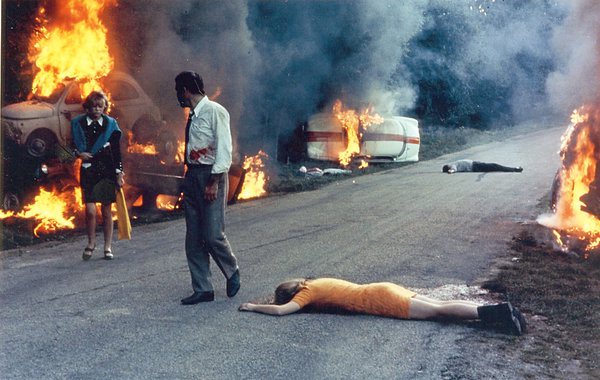
Godard is well-known for his leftist politics and he employs this bent to a great degree in this bizarre and hilarious film. It’s a send up of modern culture which prominently features lots and lots of cars. Some driving, some driving over people, and many crashing, crashed and burning.
The film follows a contemptable couple who are motivated entirely by selfish pursuits. Their main aim in the loosely-structured story is to collect, rightly or wrongly, an inheritance from a dying relative. As archetypes, they are the very image of materialistic narcissists and the myriad of cars they navigate around and through are the ultimate symbols of their desires. Cars are freedom, cars are status markers, cars are the final capitalist dream.
By the end of the movie, Godard proves that even supposed anarchists are just as covetous and deceitful as any of us, to the point that we’re even literally ready to eat the people we profess to love if we have to. But near the start of the film is our sublime moment.
A long take follows the couple in their car as they swerve in and out of traffic on an impossibly congested country road. It’s a tracking shot moving parallel to the scene. They’re being jerks, cutting people off, playing chicken with oncoming traffic, honking and fighting the whole way.
Eventually, they’re even swerving past accident victims callously, maneuvering dangerously around overturned and burning cars. As they move down the road, the rest of the drivers become progressively more absurd. They are seen having picnics around dead bodies, playing with beach balls from car to car and just behaving in ways that don’t make any sense.
It’s a cynical, gut-busting scene that really says something about just what we’re taught to care about in the modern world – and what we’re not. Beyond the feeling it gives viewers, the choreography involving dozens of cars and precise movements are astonishing. It’s one of cinema’s greatest accomplishments without any showy camera movements or cuts. It gets better every time you watch it.
2. Final Long Take Sequence in Michelangelo Antonioni’s “The Passenger”
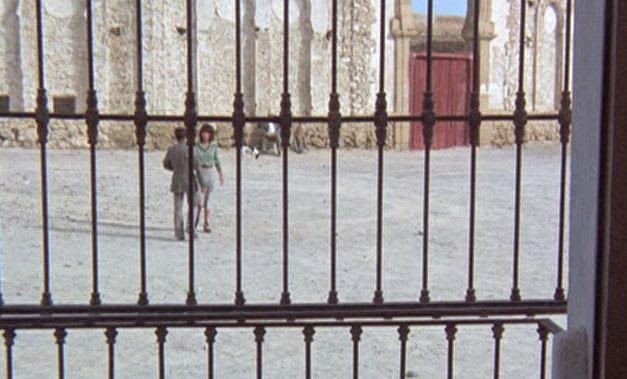
It’s a pretty common fantasy in film – and indeed, in life – to stumble onto a situation where you can exchange your identity with that of a dead person. This idea has been seen many times in comedies and thrillers. But in Antonioni’s world, it becomes a different matter altogether.
The film follows a reporter in Africa who’s weary of his life and falls upon just such a scenario. Taking the opportunity to switch papers with a deceased man he had only met the night before, the protagonist believes he’s getting a chance to free himself of his past and thusly free to begin life anew on a different set of terms.
What he discovers quickly, though, is that this idea is an illusion. Sure, he’s slipped away from himself (mostly) but becomes just as trapped in this new incarnation. His expired counterpart had been ensnared in a risky life of gun running. Following appointments in a datebook, the journalist delves deeper into another man’s world.
At first it’s stimulating and intriguing, but it turns out no matter who’s shoes one finds themselves in, we always end up walking the same path. Making the same sort of self-destructive choices that wore out his old life, the film’s climax clearly depicts the character’s inescapable plight: regardless of who he’s pretending to be, he is trapped with being himself. And in the end, he’s committed crimes, is spending dirty money and has crossed the law, gangsters and even the love of two women.
The film’s penultimate scene is a painstakingly orchestrated long take that begins in a hotel room. The camera is looking out of a barred window over a dusty, barren town in the south of Spain. Clearly, the visual language is speaking of self-imprisonment as the lost man is now in a jail of his own making. He walks off screen and we see a scene unfold outside – his old past and new present is coming to catch up with him.
Police have tracked him down and his time is nearly up. Tracking out the barred window, we are taken into the buzz of law men clearing the streets, busily looking for their man. Moving freely along the sunny scene outside, a suggestion of an openness the protagonist will never experience again contrasts the dark room left behind.
Then, a shot is heard off screen, alerting his pursuers to his whereabouts, the camera following them in before returning to the barred window, this time looking in from the outside. Finally, the men discover the dead man in his bed – he’s shot himself.
All along the take, his body, dead or alive, is framed by those bars, the cage he’s cornered himself into. The impressive choreography of the take isn’t just a gimmick, it’s the camera itself saying “I can be free, but you never will be again.” It’s an astounding sequence, and a tribute to the power of cinema.
3. At Home in Tiny Apartment Scene from Vittorio De Sica’s “Umberto D.”
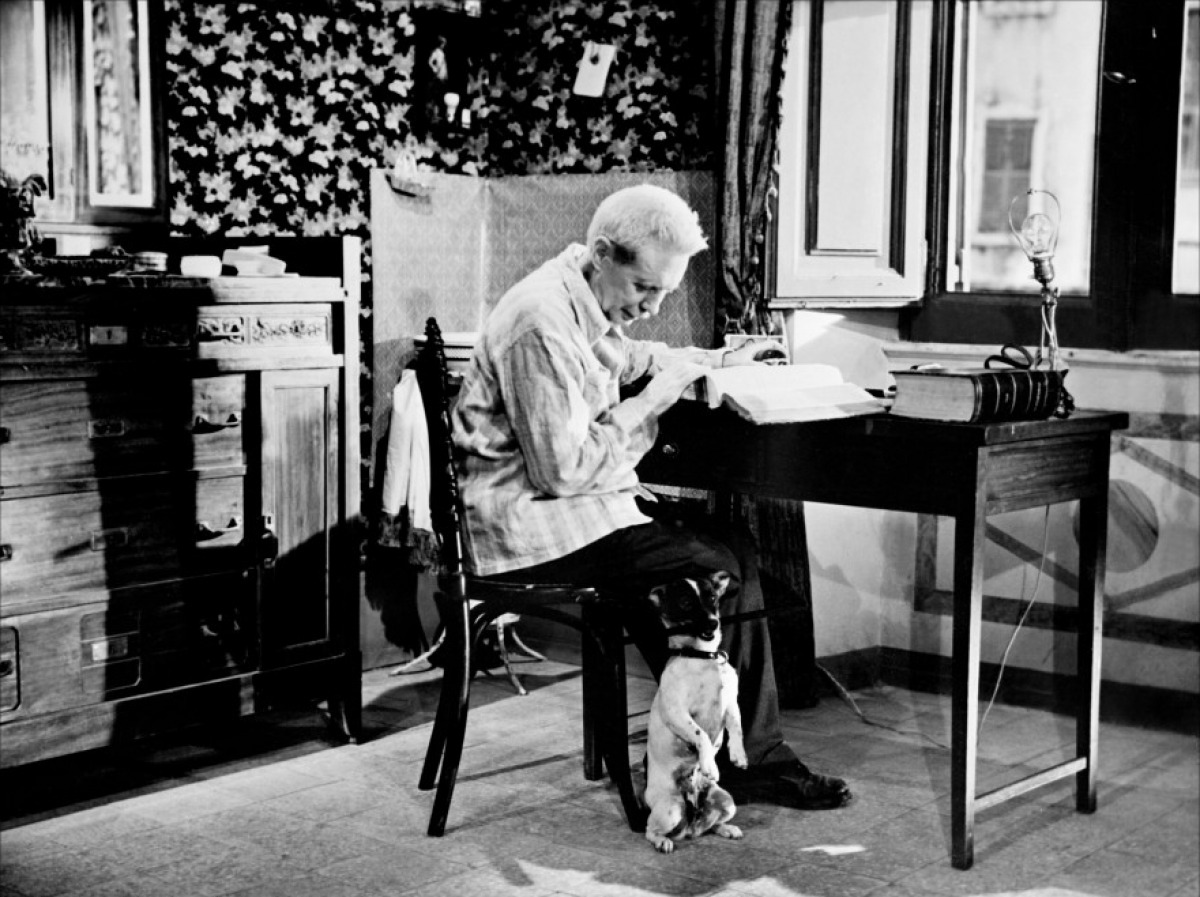
If you hate watching really unhappy films, you might want to skip this one. Ingmar Bergman called it his all-time favorite movie, so that should give you a clue. In a relentless tour-de-force, De Sica chronicles the life of the eponymous character, a pensioner with no family whose money is running out and has but one love in the world – his faithful dog Flike.
On top of that, his cold and cruel landlady is trying to force him out of the modest room he rents. Resorting to selling everything he owns, spending time in a public hospital to get free meals and, well, it just gets worse from there. De Sica brings our empathy into high gear as we feel what must be an all-too-common plight for many people.
The thing about Umberto is that no matter what happens, he fights to keep his dignity. We see this in many sequences throughout the film, many of which are pretty obvious. Such an example is when he holds out his hand to panhandle, and pretends he was just stretching the moment a man tries to give him some money. But far more subtle is a sequence closer to the beginning.
We see Umberto enter his more-than-modest rented room for the first time and watch him prepare himself for bed. In every one of his movements, we feel the pride he takes in taking care of himself and his dog. It could be a scene where an aristocrat is prepping for a party, such are the exactitudes of his movements.
The audience can sense the air with which he carried himself as a younger man in an important municipal position. The camera is minimal and rudimentary – it’s not like the space lends itself to many options. Nothing earth-shattering happens here, maybe the only time in the film this is the case. But it shows you the man Umberto has been and wishes to continue being, even if his circumstances have become undignified.
It’s a scene like this where we can really feel his loss, not just as a suffering man, but as the man he once was and never can be again. De Sica made one choice which may have helped this performance out – the title character was played by Carlo Battisti, a man who at the age of 70 had never acted in his life, nor did he ever again. One wonders if that alone wasn’t enough of a source of displacement in the actor’s mind to express Umberto’s tone.
4. Drowning in the Cesspool Scene from Lena Wertmuller’s “Seven Beauties”
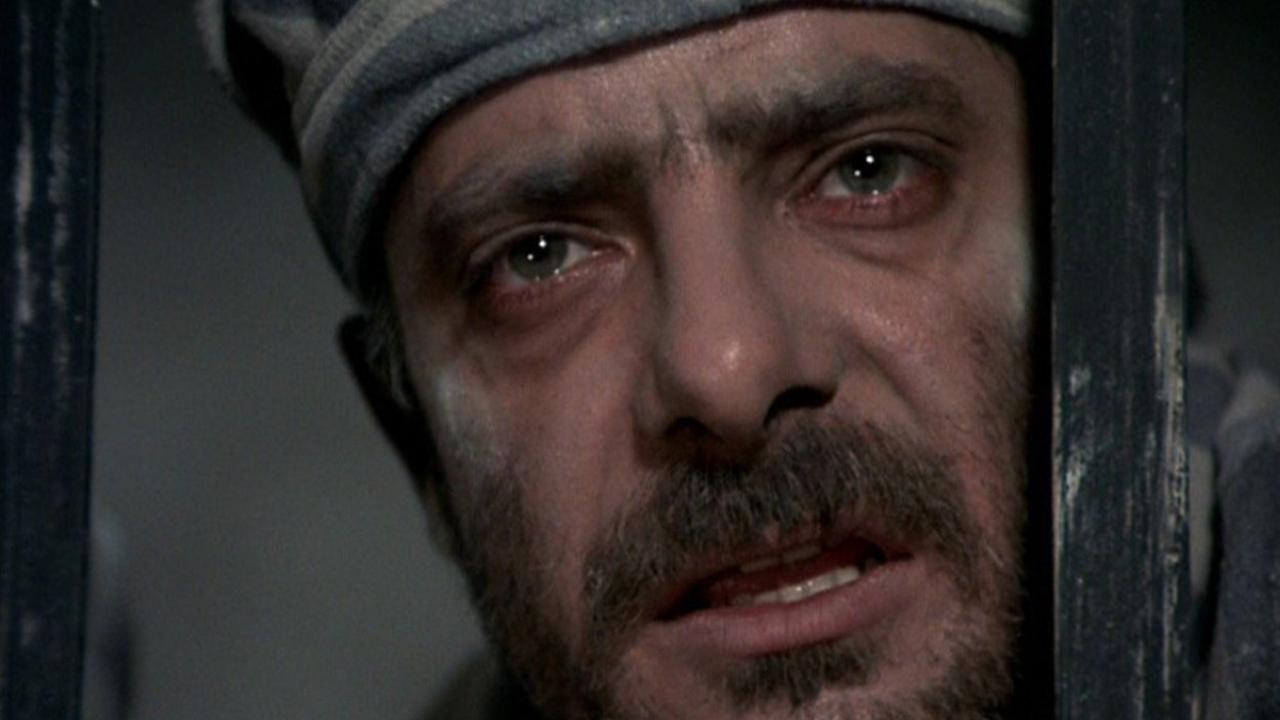
In a rare bit of cinematic magic, the ultimate expression of freedom is shown as a man jumping deep into a bottomless pit full of human excrement. If this seems like nothing more than disgusting hyperbole, consider the overall scope of Wertmuller’s scathing indictment of the base survival instinct so often glorified throughout the ages.
The film’s protagonist is a murderer, a man who committed a grisly killing as a matter of family honor. But this event propels him into a progressive series of misadventures as he engineers his way from jail to an insane asylum and finally, into the heart of World War II.
Every move he makes is designed only to make him stay alive with as little suffering as possible. Enlisting in the Italian army to escape the law, he eventually deserts and winds up in the worst place possible. Having relied on lying, cunning and daring escapes to avoid his fate, our man ends up in a German concentration camp.
At this point, facing a demise worse than any he’s slipped away from, he makes a choice: to woo an obese, cruel female Nazi commandant and provide her sexual favors in exchange for life and comfort. The film isn’t showing this guy as a hero. From the start, he’s been impulsive and short-sighted and only too willing to compromise himself in order to save face and eschew responsibility.
During his stay at the camp, his mistress at one point orders him to choose six of his fellow prisoners to be executed – a duty that sickens him, but which nevertheless he is willing to carry out to save his own skin. When the moment comes, he lines up a group of condemned men when one suddenly breaks ranks and makes a choice: rather than be subject to the tyranny of his circumstances, he’ll choose his own fate.
So what does he do? He declares, “I’m tired of living in terror, I’m a free man. I’ll go jump in the shit!” He then runs off to the nearby cesspool, dives in and sinks into its depths, Nazi machine gun bullets chasing him down. Yes, it’s disgusting. But consider the profundity of this scene.
Here the audience has been following a craven, selfish reprobate who busies himself with creating the illusion of freedom by constantly navigating away from imminent pain and death. It’s symbolic of the illusion many of us indulge in every day – we’re trapped in our jobs, trapped in our cliques, perhaps trapped in loveless relationships or worse.
And in refusing to be free from our addictions to some of the mores we thoughtlessly conform to, what are we really doing but hiding from a truth about ourselves we cannot bear? One man in this film decided – NO MORE! – and did something at once so brave and so insane, that he was, for a moment truly free.
Even if that was in the most vile situation one could imagine. It’s a shocking moment, one which jars us away from any pretense of the supposed nobility of survival at all costs we are taught to accept as “normal.”
The audience may not agree with what Wertmuller is proposing here, and may perhaps dismiss her methods, but the effect is challenging, like all great art should be, and should not be discarded as so much waste.
5. Final Descent into Madness in Werner Herzog’s “Aguirre, the Wrath of God”

Few filmmakers capture human hubris like Herzog. And what better backdrop for the follies of avarice than the Conquistador Era in South America. The ever-intense Klaus Kinski plays the titular role of a Spanish soldier leading his men on a quest for the fabled city of gold, El Dorado.
Pushing through the Amazon jungle with his troops and a group of enslaved Indians, the crushing heat and imposing elements begin slowly driving him to him to the edge. A series of calamities begin to befall the group. Men are trapped on a raft in an eddy and subsequently killed. Fever starts to take the travelers as they combat unforgiving mountain terrain and oppressive humidity.
As these events progress, we watch Aguirre become more and more greedy, more determined to become the ruler of an unfounded dynasty in the ruins of the defeated Inca empire. His designs spur him into murder and betrayal in the midst of a malarial haze which seems almost to emanate from the screen.
It’s the worst of human greed being pulled out by bodily punishments and extreme exhaustion mixed with the dreams of royalty which drove such men in that era. By the end of the film, Aguirre has lost everything – his men, his weapons, and even his beloved daughter.
The final scene sees him floating down the river with a crew made up only of wild monkeys, with him declaring he will rule the entire continent. The performance is of Shakespearian weight, recalling the worst moments for Lear or Richard III. The image of a ruined man leading himself to his own death surrounded only by the shadows of humanity tells us everything we need to know about our own species’ greatest faults: we’re really just animals in the end.
The film greatly influenced the more celebrated Apocalypse Now, which took the same sort of madness into the Hollywood spectacle zone. This quieter take has a more lasting effect for the audience, and perhaps a much more terrifying one.